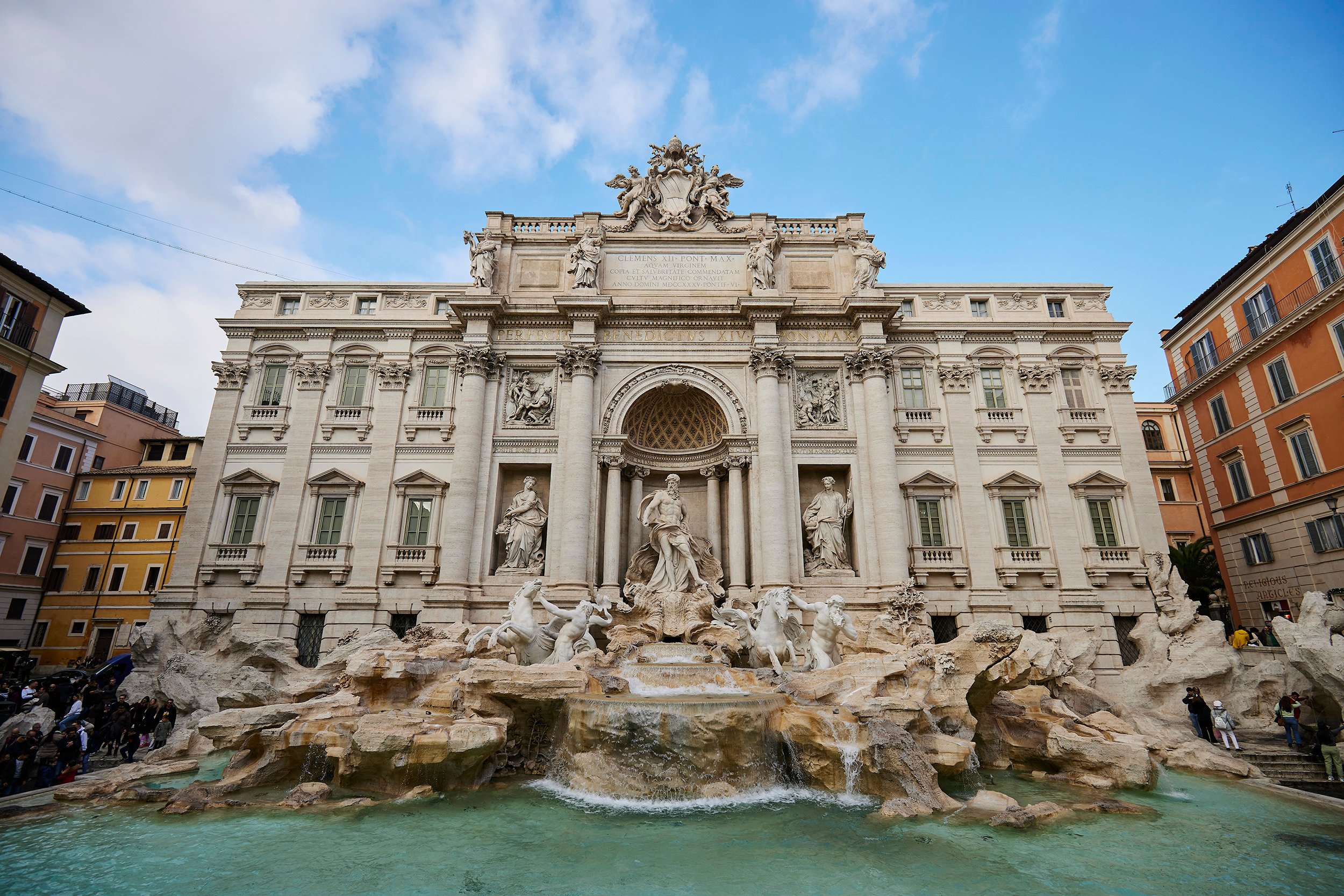
Ahead of the Vatican’s Jubilee Year in 2025, the Trevi Fountain, one of Rome’s most popular tourist destinations, will undergo a much-needed cleaning, while remaining open to visitors who want an intimate glimpse of the restoration process.
Starting in November, the fountain’s lower basin is scheduled to undergo a €300,000 ($329,000) maintenance under the auspices of the Capitoline Superintendency, during which experts will work to eliminate over-encrusted calcium that has built up over time due to the city’s hard water. Workers will also get rid of rust from preexisting bolts holding the fountain together, while manicuring the grounds around it.
During the five-week-long process., a temporary walkway will be constructed around the foundation, allowing visitors to still view the monument’s various aspects, notably the statue of Oceanus, the Greek god of the sea, and his horse drawn chariot.
Oceanus statue at the center of the Trevi Founatain in Rome, Italy. Photo: Victor Virgile / Gamma-Rapho via Getty Images.
“We’re conscious of the fact that this is one of the most iconic monuments in the world, but the fountain will remain visible throughout the maintenance period,” Miguel Gotor, Rome’s culture chief, said.
The 18th-century fountain, masterminded by Nicola Salvi, is a favorite of tourists and locals alike, attracting over four million visitors a year. It has also become an icon in Rome and beyond, serving as the backdrop for many films and TV shows over the years including the 1953 Audrey Hepburn vehicle Roman Holiday and 1960 Fellini classic La Dolce Vita.
The fountain was last cleaned in 2014 with backing from Fendi, one of Italy’s premier fashion houses. During the 18-month restoration, a plexiglass bridge was installed to assist with the process—which also served as the runway for Fendi’s 90th anniversary show in 2016.
This most recent maintenance of the fountain is part of a larger €1.2 million ($1.3 million) spruce-up of five other Roman fountains, including the Barcaccia located in Piazza di Spagna and Fontana delle Tartarughe in Piazza Mattei.
Visitors at the Trevi Fountain in Rome, Italy. Photo: Jeffrey Greenberg / Universal Images Group via Getty Images.
During this latest cleanup effort, the number of visitors accessing the platform will be limited and monitored. According to the city’s mayor, Roberto Gualtieri, this measure is necessary better monitor attendance and address the current overcrowding of the landmark, with Gotor noting it “will allow us to study flows and times.” In remarks, the mayor indicated that these records will help the city assess whether to impose a ticketing system for entry to the fountain.
The charging of a fee to the open-air attraction was first put forward last month by the city’s tourism official, Alessandro Onorato, who proposed levying a €2 ($2.20) entry charge to manage the number of visitors.
“We have to avoid, especially in a fragile art city like Rome, that too many tourists damage the tourist experience, and damage the city. We need to safeguard two things: that tourists don’t experience chaos and that citizens can continue to live in the center,” Onorato said. (Wayward tourists have been known to jump into the fountain, which is prohibited.)
Last year, the Pantheon began charging a €5 ($5.50) fee for entry (it remains free to residents of Rome), with the bulk of proceeds earmarked for maintenance costs.